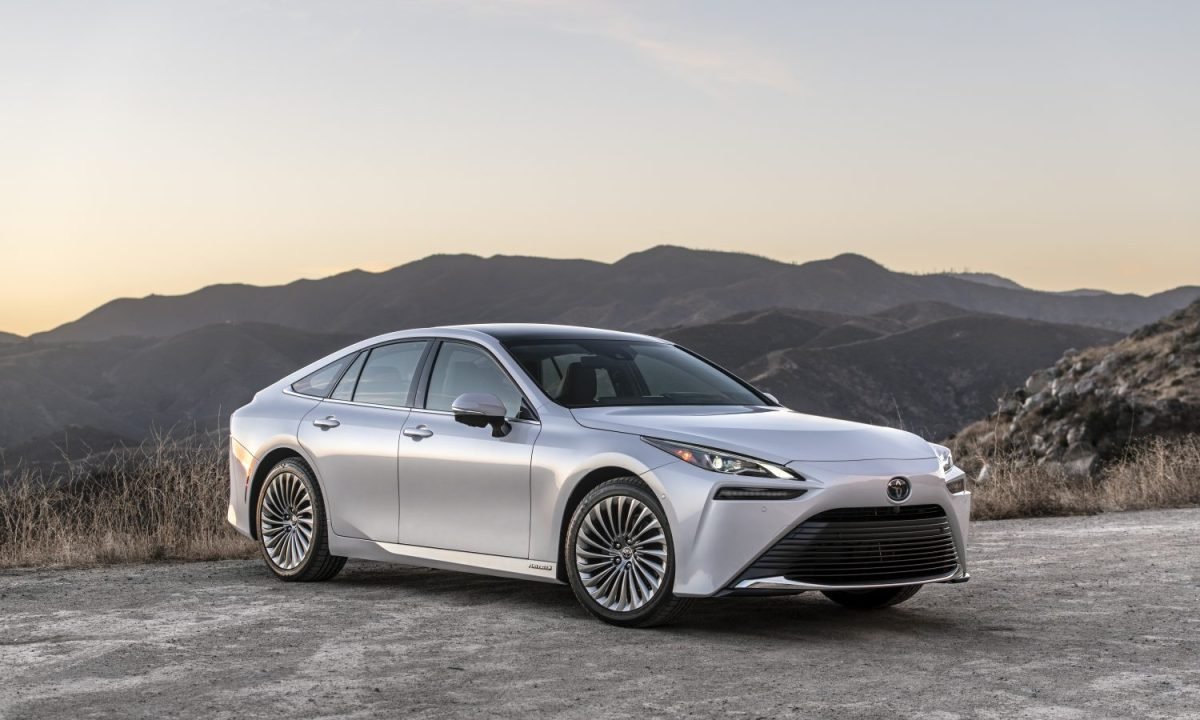Are you in the market for a free car? Well, hold on to your hats because Toyota is offering a $40,000 discount on their 2023 Toyota Mirai, a fuel-cell vehicle that normally retails for $52,000. And that’s not all – when you take into account the $15,000 worth of free hydrogen over six years and the 0% interest loan option, Toyota is basically paying people $3,000 to take the cars off their hands.
But don’t get too excited just yet – there’s a catch. It’s all well and good to get a discounted car, but only if you can actually find a place to fill up on hydrogen.
This seemingly unbelievable offer from Toyota comes just weeks after Shell announced the closure of their hydrogen filling stations in California. While the oil company only had seven stations to begin with (five of which were out of order), this still represents more than 10% of the state’s stations, most of which are located in Los Angeles and San Francisco. And to make matters worse, a quarter of the remaining stations are currently offline, according to the Hydrogen Fuel Cell Partnership.
It’s safe to say that California is currently the only state where owning a fuel-cell vehicle makes sense – that is, if you’re lucky enough to have a functioning filling station nearby. But even then, it’s a bit of a stretch. You’ll have to squint and tilt your head to make it seem feasible.
Despite these obstacles, Honda seems to be on a different path. They recently took the time to transform their best-selling CR-V into something resembling Frankenstein’s monster – a plug-in hybrid fuel-cell vehicle.
The crossover’s 17.7 kWh battery provides 29 miles of electric-only range, and once that’s gone, the front-mounted fuel cell will start using hydrogen from a pair of carbon-fiber tanks. One tank is located under the rear seat, while the other is behind it, taking up a significant amount of trunk space.
But what is the result of all this complexity and compromise? A grand total of 270 miles of range, which is about the same as a mid-range electric crossover. The difference is, the electric vehicle isn’t limited to the confines of LA or SF.
While hydrogen may hold great potential as a fuel source for various industries, from industrial heat and steel production to long-distance shipping, it has yet to gain traction in the passenger car and truck market.
Many hydrogen startups are pitching themselves as zero-carbon solutions for these industries. For example, Electric Hydrogen has raised $600 million to target steel, power, methanol, and ammonia production. And Advanced Ionics, which was a finalist at the 2023 Startup Battlefield, is looking to provide hydrogen to ammonia and chemical producers. Hgen, another company in this field, is also eyeing the steel and ammonia markets. Do you see a trend here?
But when it comes to propelling passenger cars and trucks, hydrogen has not been successful. This is due to the fact that hydrogen production and distribution is still too inconsistent for everyday use. And despite the tempting discounted prices of the Mirai, fuel cells are still expensive. Plus, for fuel cell vehicles to truly reduce carbon emissions, they would need to run on green hydrogen instead of the fossil-fuel derived “gray” hydrogen that currently dominates. Until this happens, fuel cell vehicles are only marginally better for the environment than advanced hybrid cars.
In the near future, it seems clear that zero-emission, light-duty vehicles will need to rely on batteries instead. So why are companies like Toyota and Honda still so optimistic about hydrogen?
It’s difficult to know what discussions take place behind closed boardroom doors, but there are a few potential reasons why automakers may be pushing for fuel cells. A cynical perspective is that these companies are aware that hydrogen infrastructure and fuel-cell vehicles won’t be ready for at least another decade. However, by promoting the advantages of this drivetrain (such as quick refueling times), they can convince consumers and politicians who may be wary of electric vehicles to embrace fuel-powered alternatives for the time being. In a sense, it’s a way for them to appear environmentally friendly and technologically advanced while avoiding the common notion of a low-emissions transportation future – electric cars.
On the other hand, it’s also possible that these companies are simply caught in their own routines and can’t break away from their tried-and-true methods. Fuel cells, like internal combustion engines, are complex and mostly mechanical, fed by pumps and tubes and relieved by exhaust pipes. And unlike batteries, most of the design and manufacturing processes can be kept in-house instead of being outsourced to suppliers.
Lastly, automakers may be under the impression that consumers won’t fully switch to electric vehicles until charging times are comparable to those of gas-powered vehicles. And while the time it takes to charge an EV continues to decrease, it’s likely that they will never reach the five-minute benchmark that hydrogen fueling currently offers. Some may truly believe that an extra five or ten minutes could be a deal-breaker for most customers.
It may seem like a stretch, but maybe these automakers will be proven right at some point in the future. If the hydrogen startups of today succeed and are able to produce enough hydrogen to meet the demand of these industries, then it might make sense for fuel-cell vehicles to become more readily available for the general public. But for now, it’s safe to assume that we won’t be seeing that happen in the next ten to twenty years.








